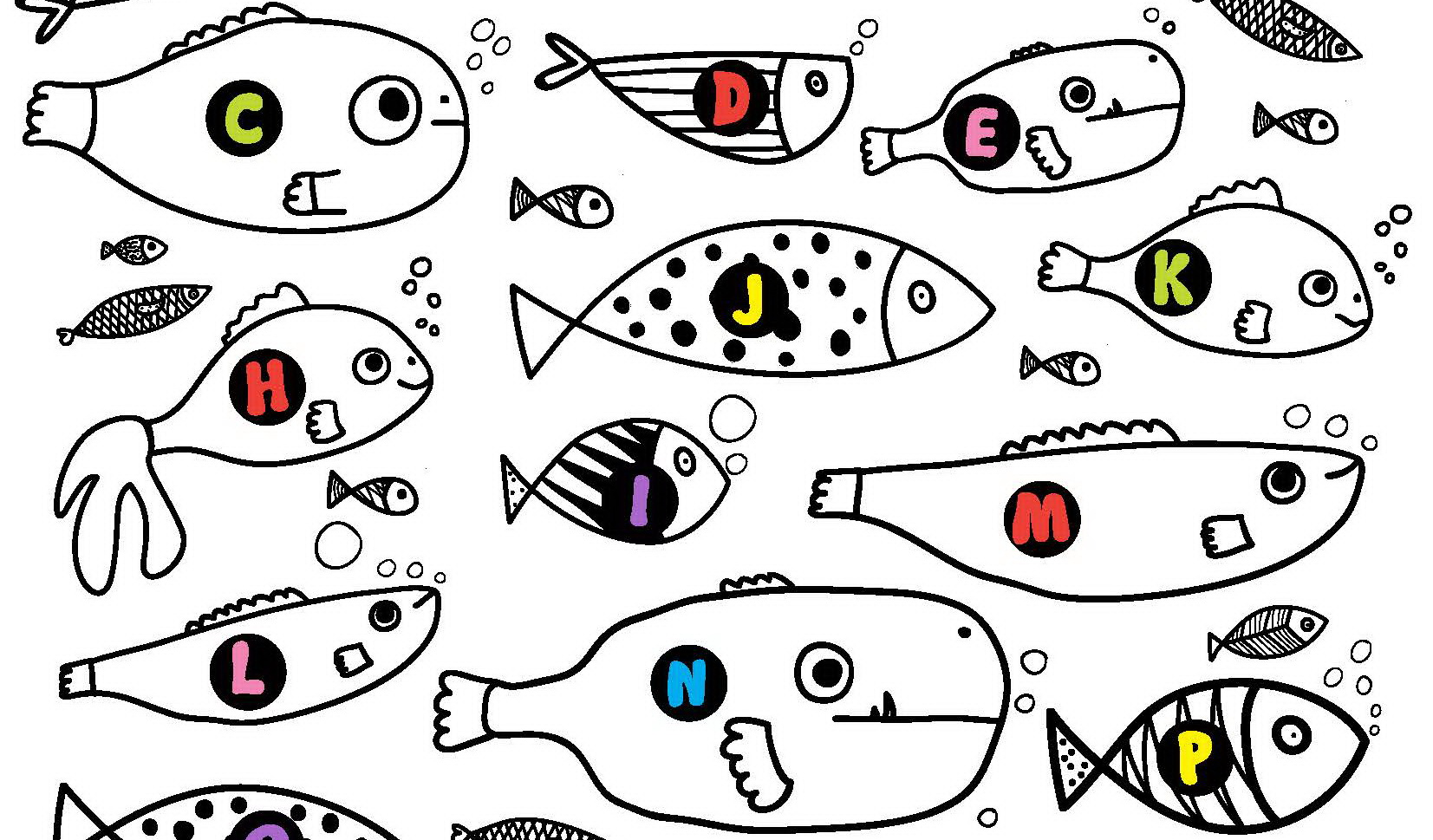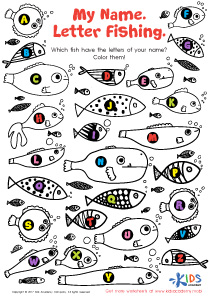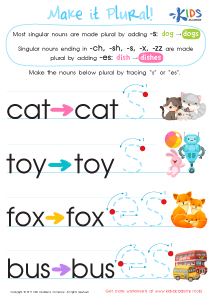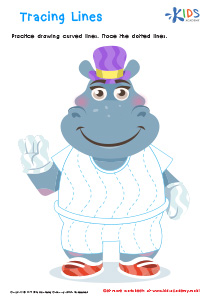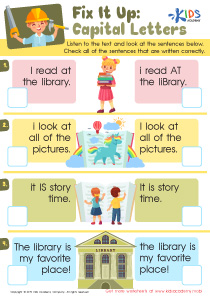Letter recognition Easy Letter Recognition Worksheets for Ages 6-7
6 filtered results
-
From - To
Our "Letter Recognition Easy Letter Recognition Worksheets for Ages 6-7" provide engaging and effective resources designed to help young learners identify and understand letters. Perfectly tailored for children aged 6-7, these worksheets focus on essential skills such as identifying upper and lower-case letters, matching letters with their sounds, and improving overall alphabet knowledge. With fun and colorful exercises, these worksheets make learning enjoyable, supporting early literacy and preparing kids for more advanced reading and writing tasks. Boost your child's letter recognition skills and confidence with our expertly crafted worksheets, available for easy download and print.
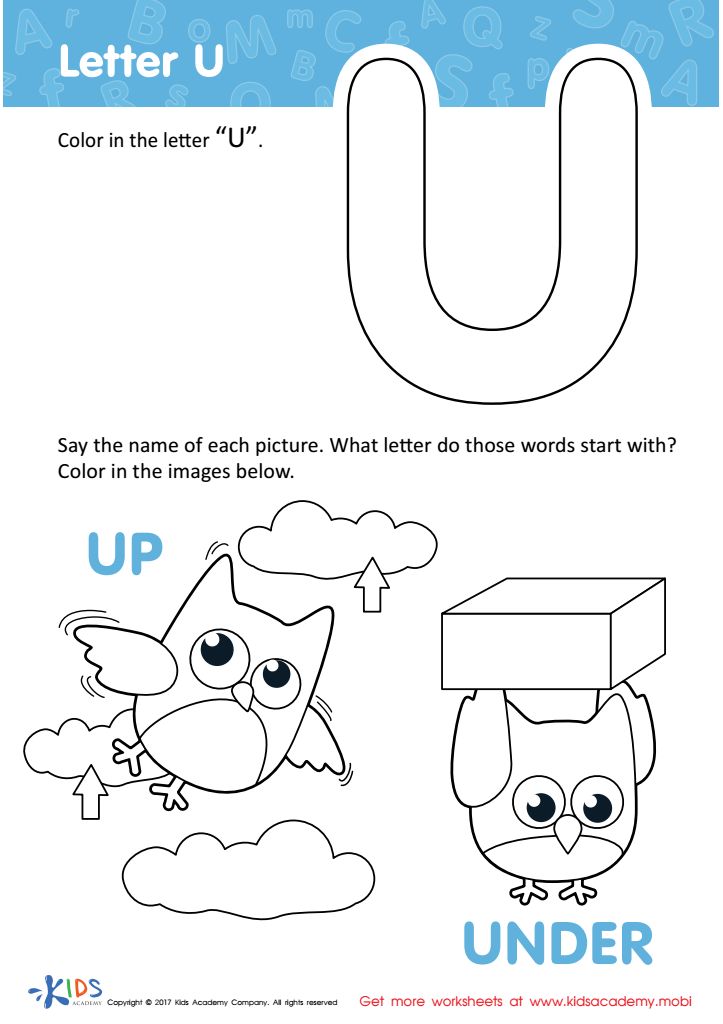

Letter U Coloring Sheet
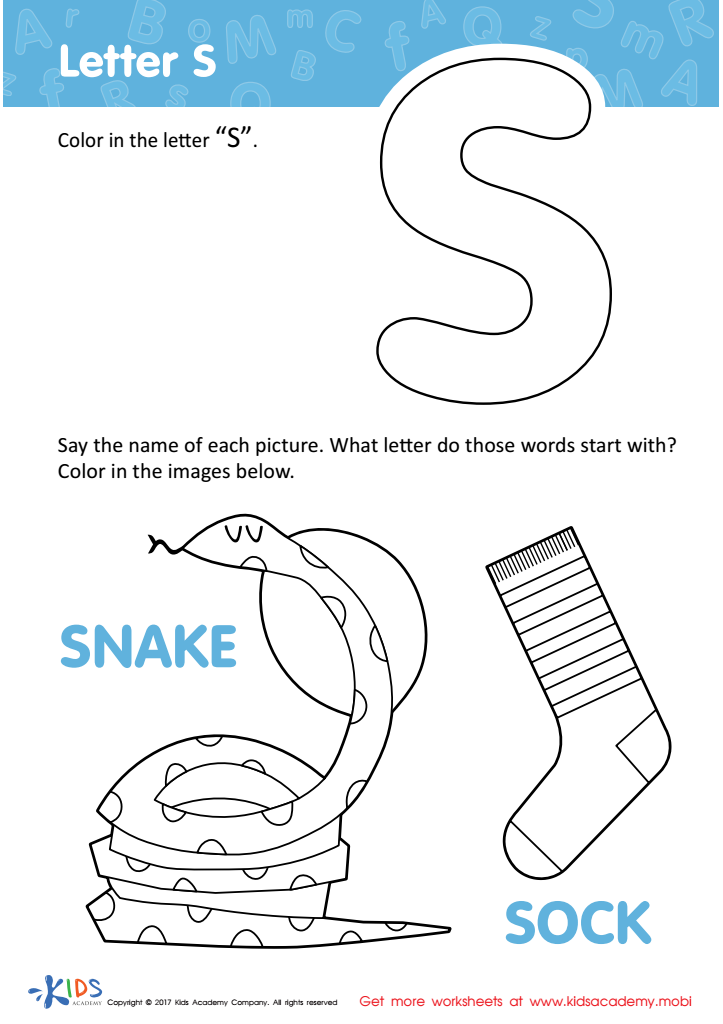

Letter S Coloring Sheet
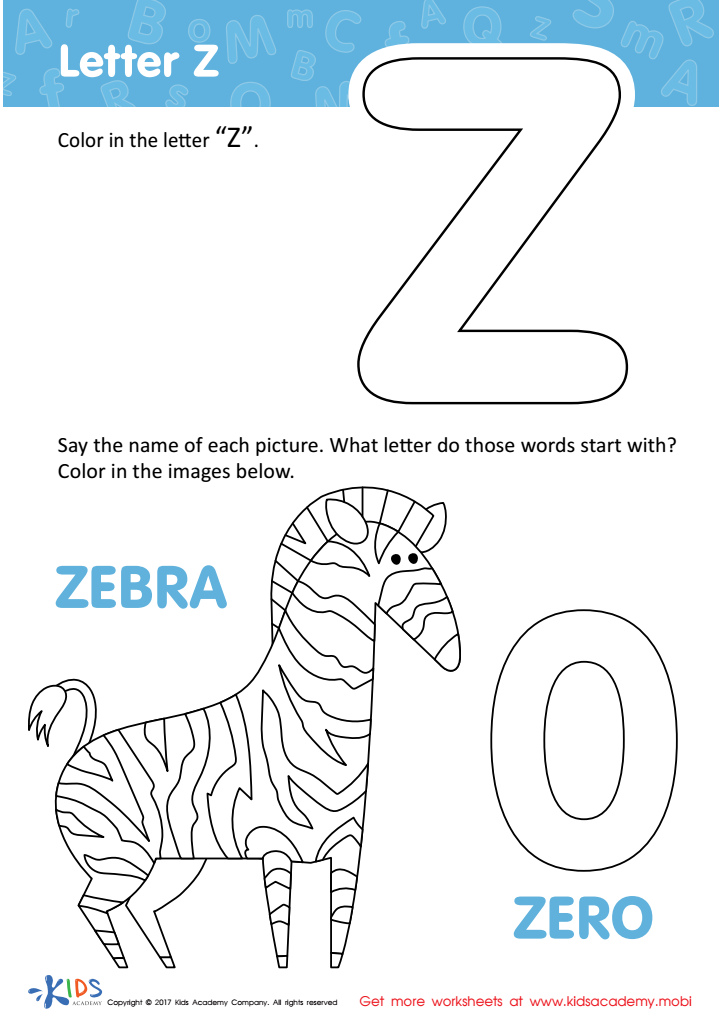

Letter Z Coloring Sheet
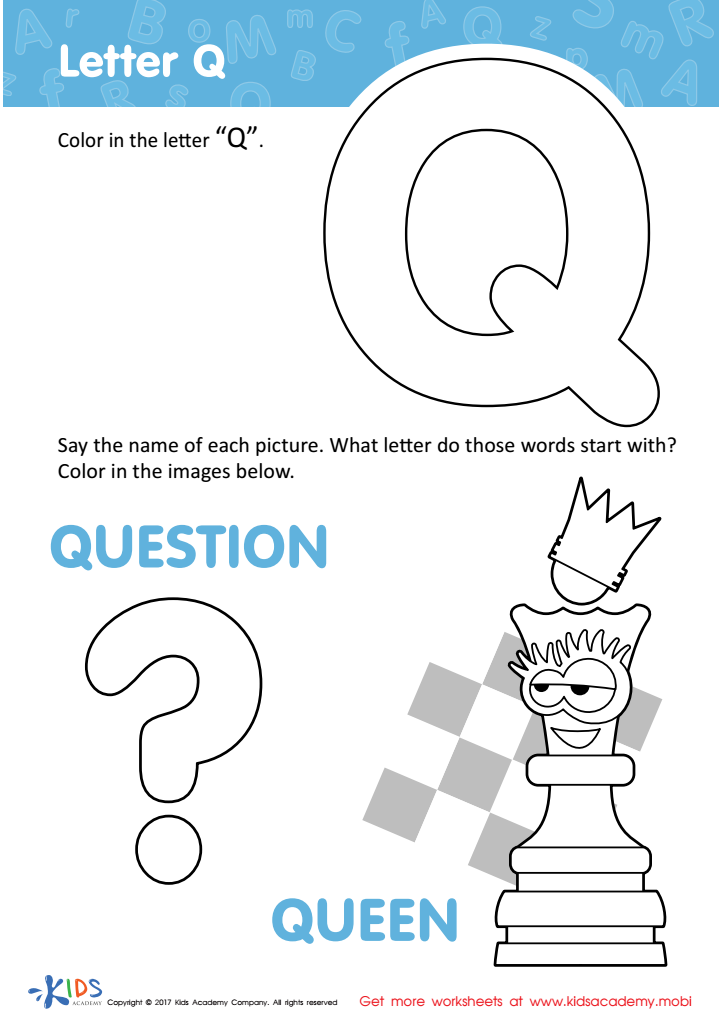

Letter Q Coloring Sheet
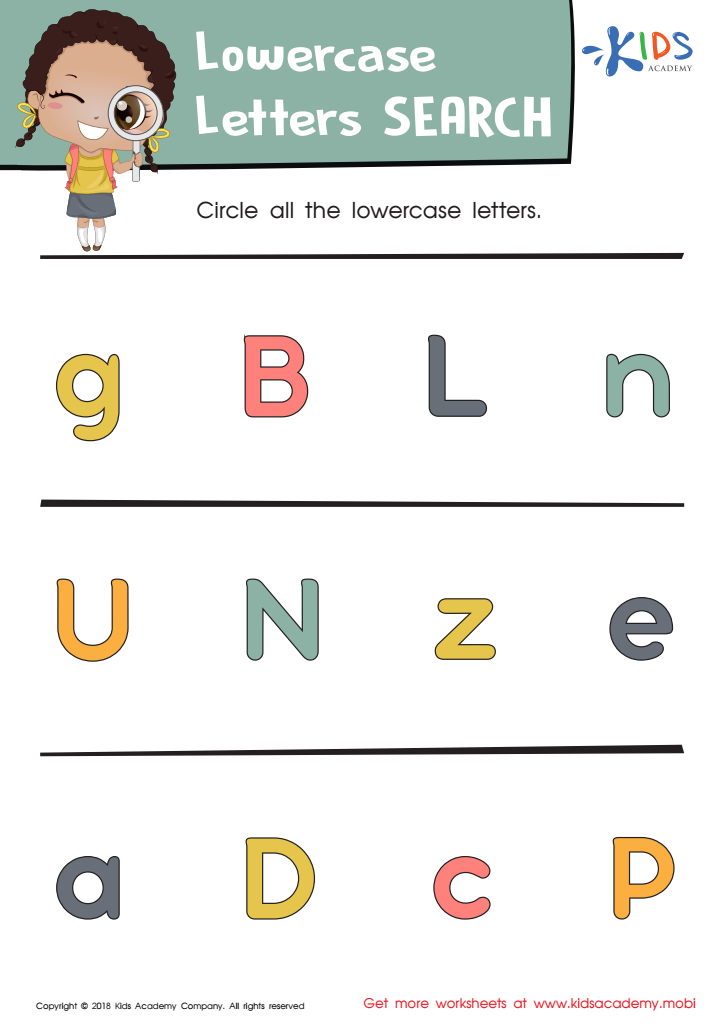

Lowercase Letters Search: Assessment Worksheet
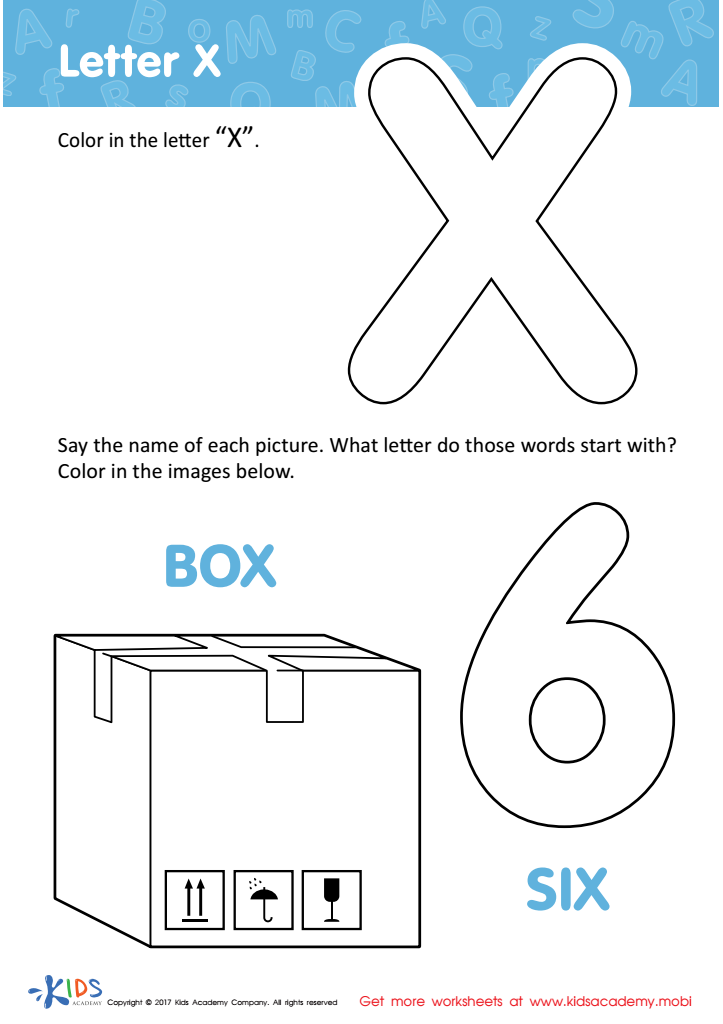

Letter X Coloring Sheet
Letter recognition is a foundational skill critical for early literacy development, key for children ages 6-7. At this stage, children transition from recognizing letters to forming words and sentences, making letter identification a vital prerequisite. This skill allows children to comprehend that letter symbols correspond to specific sounds, an essential step in phonemic awareness.
For parents, supporting letter recognition translates directly to aiding their child's language development and cognitive skills. Strong letter recognition skills enhance a child's ability to decode new words, fostering confidence and enjoyment in reading. When children easily identify letters, they experience less frustration, paving the way for smoother learning progress and a more positive educational experience.
For teachers, ensuring that students attain easy letter recognition is fundamental to structuring more advanced literacy instruction. Recognizing letters efficiently enables children to follow classroom literacy activities more effectively, participate actively in reading exercises, and grasp spelling patterns. Consequently, this skill supports overall academic success and opens avenues for improved performance in all subject areas.
Prioritizing letter recognition during these formative years sets the stage for lifelong literacy. It not only facilitates smoother reading acquisition but also nurtures a love for learning and exploration, crucial for overall development.

 Assign to the classroom
Assign to the classroom

